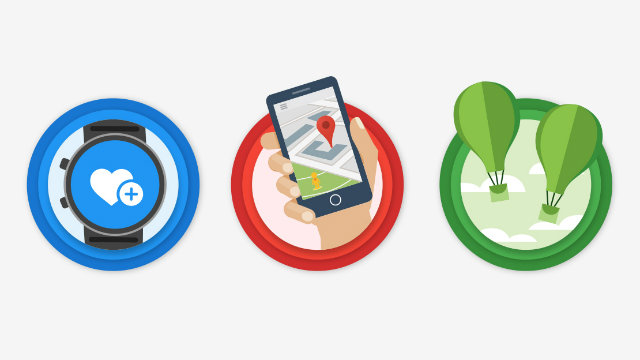
“Prediction is very difficult, especially about the future”: this quote, attributed to the Danish physicist Niels Bohr (Nobel Prize in 1922), perfectly depicts the complex act of foreseeing the future of technology. Only the brave, to quote another motto: while Google may not have crystal balls, it surely has search data. And customers’ data is the key indicator to predict what’s to come. Let’s take a look at Google’s 3 tech trends for 2015, and how they can help marketers improve digital customer experience.
We are all submerged in a hyper-connected environment, where real and virtual melt into a new dimension shaped by disruptive technologies. Customers connect each other using mobile devices; people interact with objects; machines communicate among themselves; the ever flowing big data stream that comes from these interactions has changed the rules of marketing. The connection between brands and customers - mediated by mobile technology - is totally shaken up.
No one can beat Google in collecting and analyzing huge amounts of data, based on information about customer intentions gathered by search queries. At the start of every year, people at Mountain View sit down together to forecast which trends will shape the industry and which technologies people and brands will embrace. The results is a brief - yet very insightful - list that strengthen few technology preditions we as Neosperience have done in the last months.
Connected Life Platform: with this sci-fi like term, Google refers to the so-called Internet of Things, the interconnection between smart objects. We are surrounded by increasingly intelligent devices able to talk to each other without human intervention - just think about the Nest thermostat controlled by a smartwatch. This is even more true for retail brands, where the I-o-T is set to create an ‘industry revolution’. Searches say the hype is not going to lessen in the near future:
-
Searches related to the Internet of Things grew 2.5x this past year.
-
Searches for wearable tech grew 3x this past year.
-
Searches for smart lightbulbs are up 36% from last year.
-
4.9 billions connected things will be in use globally in 2015, up 30% from 2014.
The Internet of Me: mobile is rapidly becoming the main channel for content marketing strategies. Following the mobile mind shift revolution, our life has become a sequence of online moments influenced by personal devices (i.e. smartphone, tablet, smartwatch). As devices get smarter, the Internet becomes the hub for all these connected platforms. An hub that companies can use to create a better customer experience, with context aware content, personalized offers, and localized push notifications. Searches confirm that we are facing the dawn of the Internet of Me, whose promise is to simplify user’s life:
-
1.3 billion smartphones have shipped globally in 2014.
-
151 minutes per day are spent on smartphones, more than on TV or laptops.
-
Roughly 1 in 5 searches are related to location.
-
Searches for ‘nearby’ have grown 5x since 2011.
-
Searches for personal health apps have grown 12X in the last year (thanks to HealthKit).
Faster Speed of Life: in the Age of the Customer, users have the ability to get all the information they need wherever they are, in the exact moment they want it. Mobile devices make that possible: the power balance has shifted from brands to customers, and quick moments of decision making will happen constantly as the world becomes more connected. What does this mean for your business? That your customers expect to get real-time access to your products and a seamless connection with your brand. Thus, your client should always be the core of every single strategy you plan. As an example of this:
-
Drones have entered the consumer electronics category.
-
Searches for drones grew 2.6x this past year.
-
Searches for “same day delivery” grew 2x: on demand is not just for the web anymore.
-
The Google app gets 30x as many action queries by voice as by typing.
As devices start to work together, connected objects will become platforms for your life, creating data that you can use to improve the overall digital customer experience. How can you respond to these challenges? Google says it for us: “Make interactions as fast, simple, and easy as possible and make sure they are useful in all the moments that matter”.
When tomorrow comes interesting things start to happen, don't you agree?
To help you provide a strategic advantage to your organization, Neosperience has crafted the first DCX 7-Steps Checklist, with requirements and insights for a successful digital transformation.



 Your magnifing glass to deeply understand your users and increase the value of each relatonship.
Your magnifing glass to deeply understand your users and increase the value of each relatonship. Listen to the voice of your customers deeply to understand what they truly want.
Listen to the voice of your customers deeply to understand what they truly want. The Lead Generation Platform to get leads from anonymous traffic on your website.
The Lead Generation Platform to get leads from anonymous traffic on your website.  Understand the behavior of people in physical spaces and monitor safety requirements.
Understand the behavior of people in physical spaces and monitor safety requirements. The Digital Commerce Platform designed to follow the most modern technological standards..
The Digital Commerce Platform designed to follow the most modern technological standards.. The XReality platform to tell brand and product stories by connecting physical and digital worlds.
The XReality platform to tell brand and product stories by connecting physical and digital worlds. Points, rewards, levels, badges, missions: a world of nudges to nurture your customer community.
Points, rewards, levels, badges, missions: a world of nudges to nurture your customer community. Discover all the other solutions!
Discover all the other solutions!









